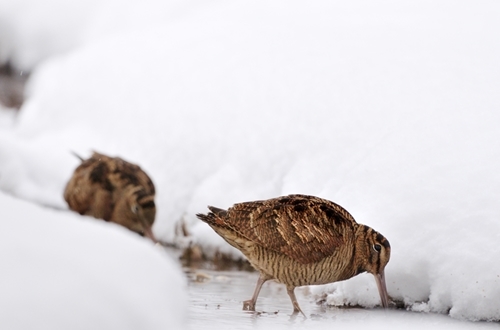Written by Chris Heward, Head of Wetlands Research

During prolonged periods of freezing weather, waterfowl and waders are less able to access food resources and, as such, become more reliant on their fat reserves. To remove any additional impact of shooting and/or associated disturbance during these periods, there is a legislative suspension on the shooting of all wild ducks, geese and waders that comes into force after 13 days of frozen conditions.
‘Frozen conditions’ are defined as a minimum daily air temperature <1°C and a minimum daily grass temperature < -2°C, when recorded at more than half of a network of 25 coastal weather stations. GWCT, along with other organisations like BASC, also support voluntary restraint following 7 days of freezing conditions.
These widely accepted guidelines are based on a general rule-of-thumb, but for some species more tailored advice can be provided. Woodcock are unable to feed when the ground is continually frozen and GWCT research shows that, during such periods, the average woodcock’s fat reserves allow it to survive without food for up to 6 days. To avoid starvation, woodcock may be forced to expend some of their bodily reserves on ‘escape flights’ to milder regions before this point is reached.
These demands mean that periods of continuous frost are usually associated with increased woodcock mortality, and we therefore recommend that people do not shoot woodcock on or beyond the fifth day of frozen conditions. This removes any additional mortality associated with shooting during the period of highest risk. For most parts of the country, this is likely to be reached today or tomorrow. We also recommend that, following a thaw, people continue to refrain from shooting woodcock for up to a week, to allow them to recover and replenish their fat reserves.
In milder parts of the country, where continuous frosts are not experienced, common-sense and restraint is advised. Bear in mind that local woodcock populations may be increased by individuals escaping frozen conditions further north or east, and an apparent ‘bumper year’ might simply reflect an influx of birds that usually winter outside the region.